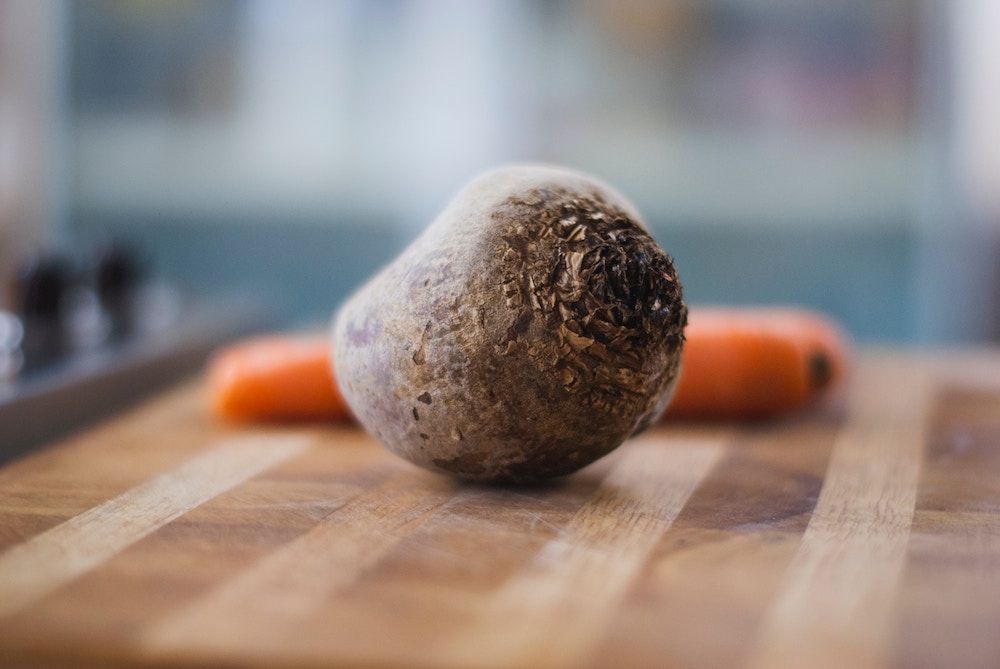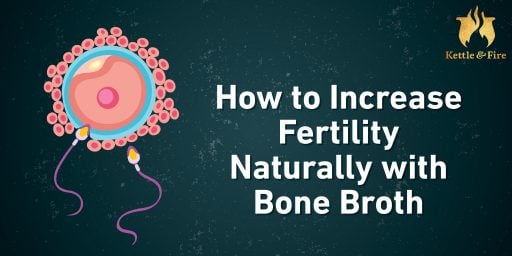Top 8 Nutrients Athletes Need to Speed Up Injury Recovery

Foot fractures, dislocated shoulders, a torn ACL — injuries are the last thing you want to deal with as an athlete. Not only can recovery time be lengthy and painful, but having an injury may also force you to put your passion on the backburner for some time.
The good news is that you can speed up injury recovery time and prevent future injuries from happening simply by having a few specific nutrients in your diet.
Let’s look closer at the top eight nutrients your body needs for injury recovery, and the best ways to get more of them in your diet.
Top 8 Nutrients You Need to Speed Up Injury Recovery
1. Collagen

Collagen is the major structural protein in the body. In fact, we’re made up of 25-35% collagen. It’s sometimes described as the glue that holds us together.
Your body naturally produces collagen. But once we hit age 25, our collagen production begins to decline (1). This means that wound healing and injury recovery time can take longer the older you get.
When you hear the word collagen, you may automatically think of skin. And it’s true, collagen is an essential nutrient for wound healing and healthy skin. However, type one collagen also makes up our bones, tendons, connective tissue, and muscles. That is why it’s one of the most important nutrients for maintaining bone and joint health, as well as speeding up recovery time for strains, sprains, and other soft tissue injuries.
Collagen also contains the amino acids proline and glycine, which are natural anti-inflammatories and powerful immune system boosters. Immune system cells are the first to respond to any form of injury and stimulate the body’s healing process — which is why supporting immunity through your diet is the most important place to begin for wound and injury healing.
Best Food Sources of Collagen:
- Grass-fed beef bone broth
- Organic chicken bone broth
- Collagen peptides (hydrolyzed collagen supplements)
- Gelatin powder
The only true food sources of type one collagen are bones, tendons, and connective tissue. Since we don’t chow down on bones in their whole form, they must be boiled and simmered into a broth, or turned into a powdered supplement. Eggs and egg whites also contain a form of collagen with a similar structure. And certain vitamins and minerals can help stimulate collagen production, such as silica and vitamin C.
Other good foods to eat to stimulate collagen production are tomatoes, rosehips, dark leafy greens, broccoli, pineapple, horsetail, berries, citrus, eggs, egg whites, wild fatty fish, and bananas.
2. Gelatin

The words gelatin and collagen are often used interchangeably in the health realm, but they do have a few differences when it comes to texture, processing and digestibility. In terms of nutrient profile, they’re the exact same — so when you take gelatin, you’ll also get the same health benefits as you would from collagen.
Now, collagen is simply gelatin that’s been more aggressively processed (a.k.a. hydrolyzed) to form a finer texture. Some people find collagen easier to digest than gelatin due to the extra processing, and it’s said to be less likely to cause digestive symptoms, such as gas and bloating. Gelatin is made from boiling down animal bones, and turns into a gel when it’s mixed with liquid (hence the name).
Gelatin is commonly used to make desserts and thicken gravies. A post-workout recovery homemade electrolyte jell-o? Now, that’s something we can get behind. If you’re curious, here’s a more in-depth explanation of the differences between gelatin and collagen.
Taking gelatin and vitamin C together can be therapeutic for tendon and ligament injuries, and may help promote greater collagen production when taken 60 minutes before physical activity.
According to USOC Sports Nutrition, the recommended dose is 0.5 grams of gelatin per kg of body weight, and 5 mg of vitamin C per kg of body weight (4).
Best Food Sources of Gelatin:
- Grass-fed beef bone broth
- Organic chicken bone broth
- 100% grass-fed gelatin powder.
3. Arginine

Arginine is an amino acid that’s essential for wound healing, and has been shown to help speed up injuries by encouraging the body to deposit collagen in wounds (5).
Arginine is considered a conditionally essential amino acid, because healthy adults can usually produce arginine on their own. However, arginine does become essential during periods of stress, including physical stressors, which means it’s extremely important to get it through your diet when you’ve encountered an illness or injury (6).
Best Food Sources of Arginine:
- Turkey
- Spinach
- Chicken
- Spirulina
- Organic dairy products (cheese, yogurt, kefir)
- Bone broth
Depending on the severity of the injury or wound, supplementing with arginine could be helpful. Be sure to check in with a qualified healthcare practitioner before taking any new supplements, and to determine the right dosage for you.
4. Glucosamine

Glucosamine is a compound that’s found in healthy joint cartilage and connective tissue, and it plays an important role in tissue growth and repair. While commonly discussed for arthritis and osteoarthritis treatment, studies suggest it may also help speed up recovery time for sport injuries that involve torn cartilage and improve mobility in joint injuries (7).
Best Food Sources of Glucosamine:
- Bone broth
- Softshell crab
- Small bony fish (sardines, anchovies)
- Eggshell membrane
5. Chondroitin
Just like glucosamine, chondroitin can help stimulate tissue growth and repair, and reduce pain and inflammation.
Best Food Sources of Chondroitin:
- Bone broth
- Meat gristle
- Chondroitin supplements from animal cartilage
6. Hyaluronic Acid

Hyaluronic acid injections have blown up the skincare industry as a natural way to reduce the appearance of fine lines and wrinkles. But now, more athletes are beginning to use hyaluronic acid to help relieve pain and treat bone injuries and osteoarthritis (9).
Hyaluronic acid is a molecule that’s found in skin tissue, bones, tendons, and the synovial fluid around joints. One of its primary roles is to lubricate the joints, and provide a form of “cushioning” at the ends of bones to prevent wear, tear, and bone degeneration.
While hyaluronic acid injections may be more therapeutic for chronic pain (be sure to check with your doctor on this one), you can also get hyaluronic acid from certain food sources.
Best Food Sources of Hyaluronic Acid:
- Bone broth
- Animal skin
- Root vegetables (lotus roots, sweet potatoes, carrots, turnips)
- Leafy greens
7. Glutamine

Glutamine is an amino acid that helps your body maintain lean muscle mass. It also happens to be the primary amino acid that’s lost during any type of tissue injury (10). Glutamine helps stimulate collagen synthesis, which helps heal wounds, and repair soft tissue such as tendons and ligaments (11).
Taking glutamine and arginine together has been shown to significantly improve collagen production in adults (12). Similar to arginine, glutamine is a conditionally essential amino acid that becomes essential under periods of stress.
Best Food Sources of Glutamine:
- Beef
- Chicken
- Bone broth
- Fish
- Seafood
- Eggs
- Legumes
- Brussels sprouts
- Miso
8. Zinc

Zinc is an essential nutrient for immune system function, and helps heal torn tissue by promoting new tissue growth (13). Zinc also plays a critical role in healing during the early stages of inflammation (14).
Best Food Sources of Zinc:
- Oysters
- Seafood
- Pumpkin seeds
- Lentils
- Beans
- Beef
- Chicken
- Bone broth contains small amounts of zinc.
Other Beneficial Nutrients for Muscle Health
Other nutrients that are shown to be play a role in overall muscle, tissue and bone health are:
- COQ10
- Calcium
- Magnesium
- Nitric oxide
- Creatine
- Omega 3 essential fatty acids
- HMB
We’ve included the specific benefits and food sources of these nutrients, as well as the 8 nutrients above, in the charts below.

Source: USOC

Source: USOC
Bone Broth for Injury Recovery
Now, you may have noticed, there’s one superfood that contains all of the important nutrients listed above: bone broth.
You may associate bone broth with having a cold, but it’s also nature’s perfect formula for injury recovery, wound-healing, and reducing inflammation. And believe it or not, Kettle & Fire Bone Broth was actually born because our founders, Justin and Nick, needed a high quality bone broth to heal Nick’s torn ACL.
Here’s a quick visual to summarize the nutrients bone broth contains, which help support bones and joints, and speed up wound and tissue repair.
Key Nutrients for Recovery Found in Bone Broth

In addition to sipping on bone broth plain or adding it to soups and stews, there are many ways you can get creative with adding bone broth to your diet. From delicious smoothies, ice cubes, collagen gummies, lettuce wraps, and quinoa salads, see our list of top favorite bone broth recipes here.










